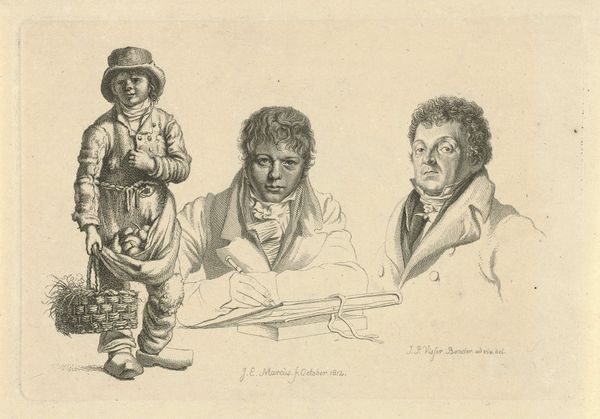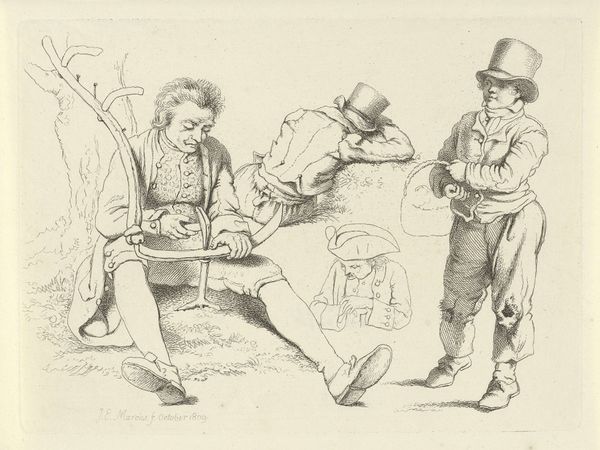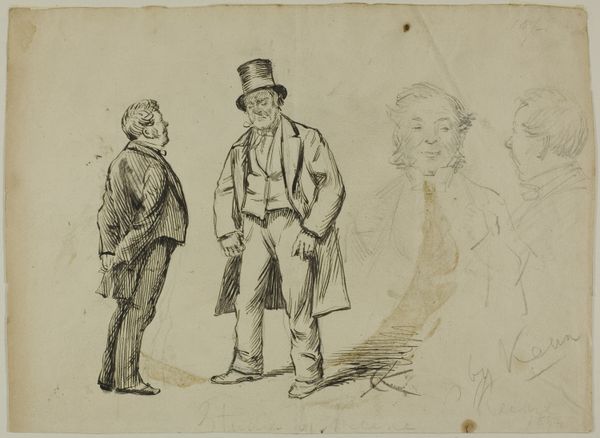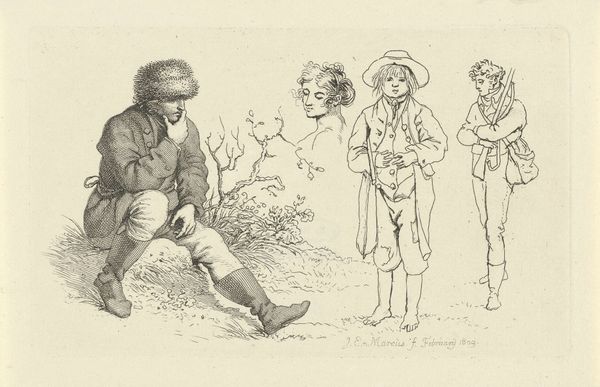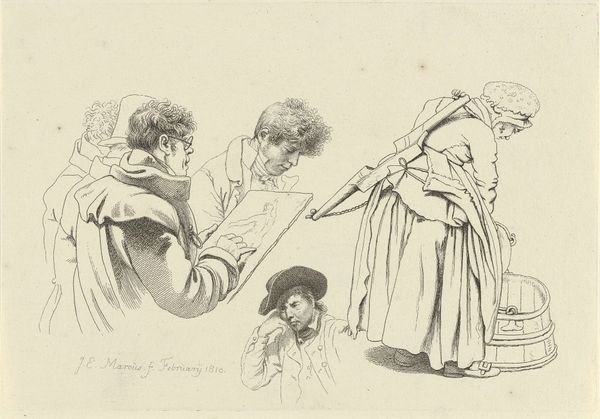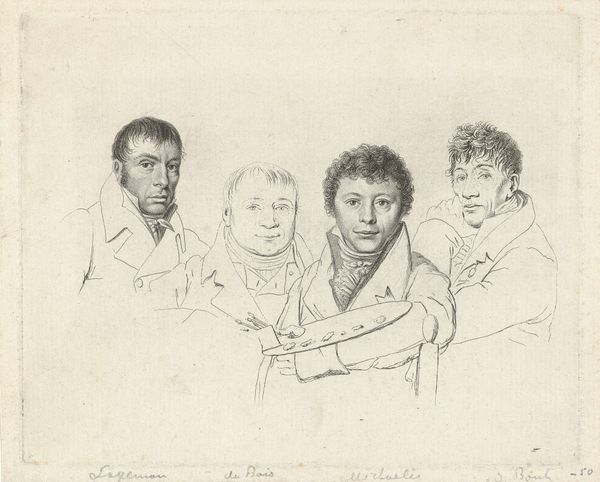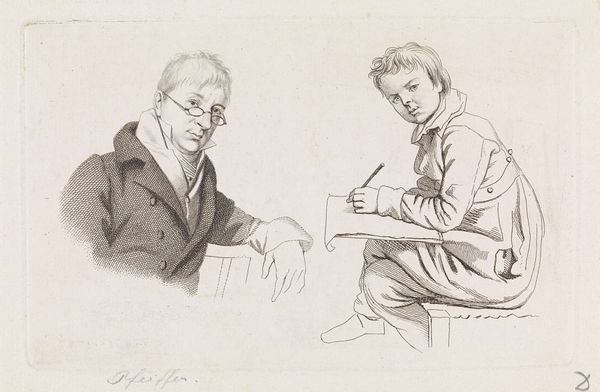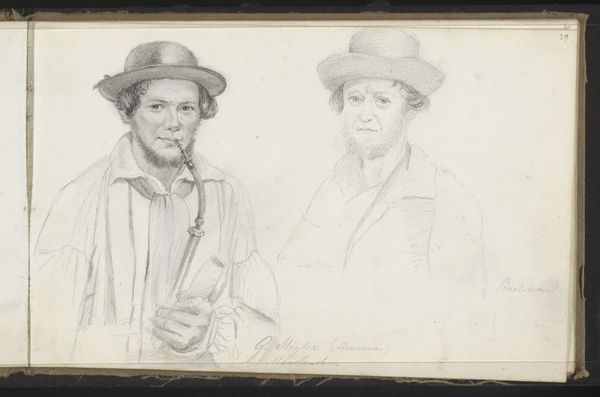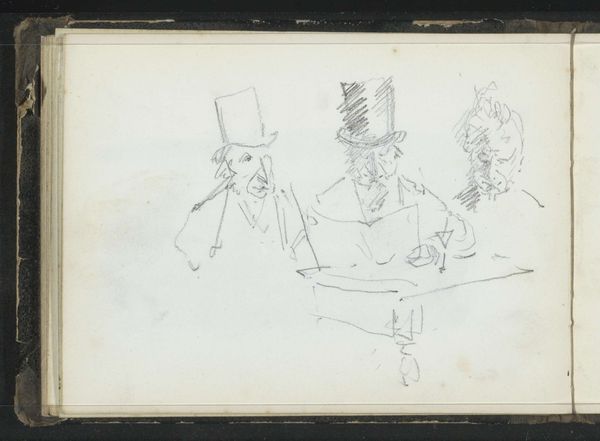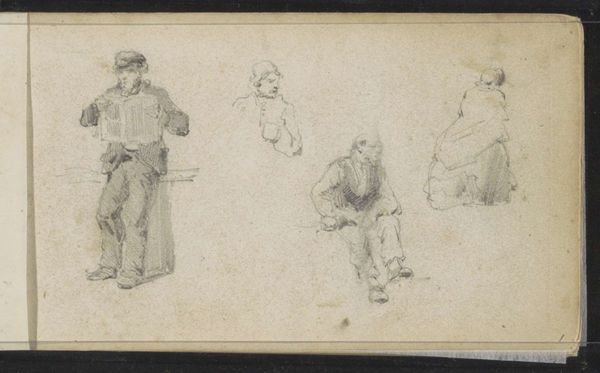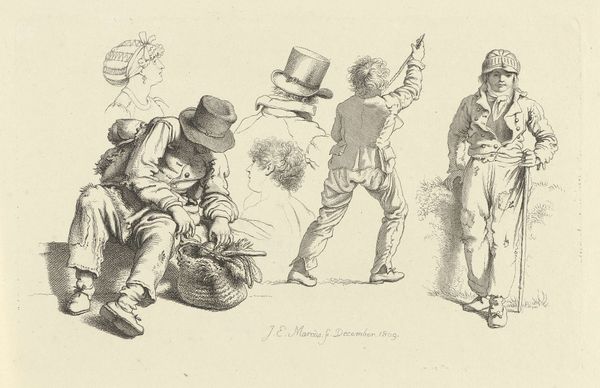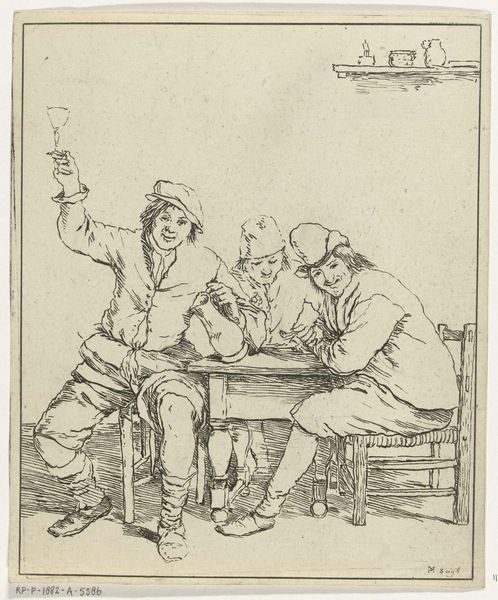
Portretten van J.P. Visser Bender en P.Pz. Barbiers naast een jongen 1812
0:00
0:00
drawing, pencil
#
drawing
#
neoclacissism
#
pencil
#
genre-painting
Dimensions: height 120 mm, width 175 mm
Copyright: Rijks Museum: Open Domain
Editor: Here we have "Portraits of J.P. Visser Bender and P.Pz. Barbiers next to a Boy," a pencil drawing created in 1812 by Jacob Ernst Marcus. It feels like a formal gathering of different societal strata, but rendered in this delicate medium, it’s also quite intimate. What’s your read on this composition? Curator: It is interesting, isn't it? Notice how the grouping almost serves to codify the social structure. The two gentlemen, presumably members of the bourgeoisie, are carefully depicted. Juxtapose this against the young boy, seemingly a vendor based on the basket, rendered with more of a caricature quality. Editor: So, is Marcus commenting on the class divisions of Dutch society at the time? Curator: Perhaps subtly. This period saw significant social upheaval following the French Revolution and subsequent Napoleonic era, creating tensions about wealth and social mobility. Art often served as a stage for exploring—or indeed, solidifying—these shifts and anxieties. What effect do you think the choice of pencil has on how it was received? Editor: Interesting question! Perhaps the fragility and relative ease of production via drawing allowed more accessibility in portraying everyday subjects or quickly capturing likenesses for those who might not commission a painting? Curator: Precisely! Consider too the evolving function of art during this time. No longer solely confined to depicting religious or aristocratic subjects, we observe a surge in genre painting, reflecting the daily lives of an expanding middle class. The power dynamic is almost reversed here. These "common" scenes were more popular to be consumed by this rising population. Editor: I see! So the image reflects not just a moment but a broader transformation in who art was for. It's more than just portraits; it’s about the people who would look at these portraits too. Thanks, that gave me a new angle! Curator: My pleasure. Thinking about who art is *for* is almost as important as who art is *of.*
Comments
No comments
Be the first to comment and join the conversation on the ultimate creative platform.
